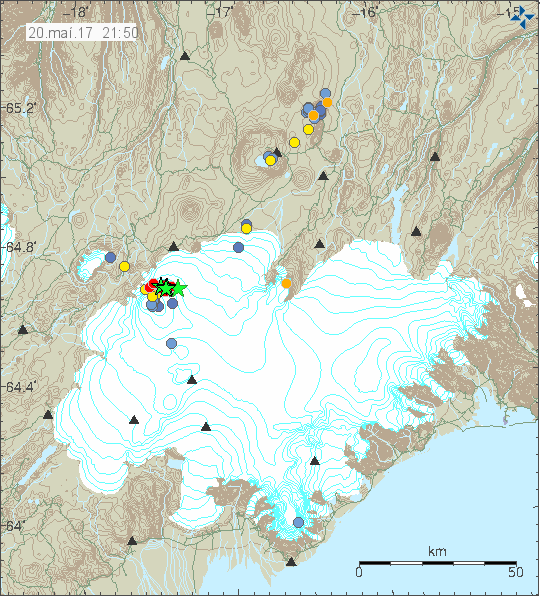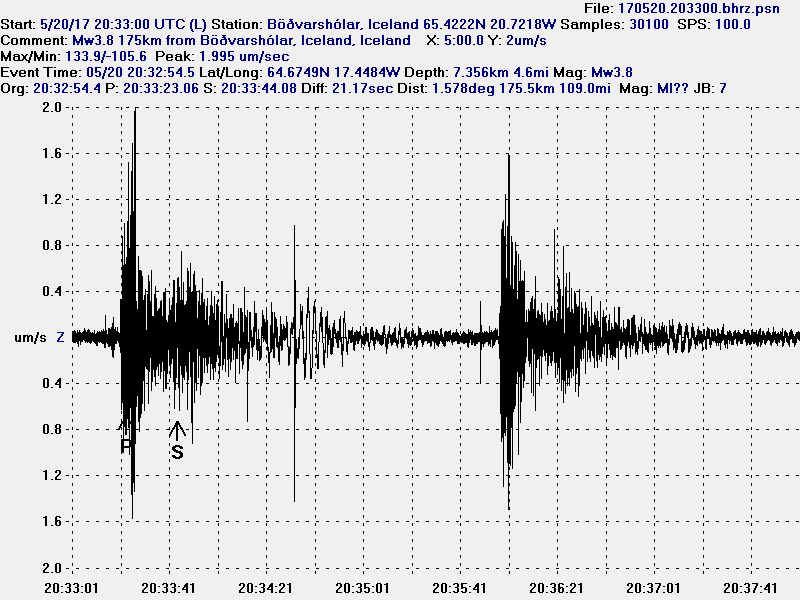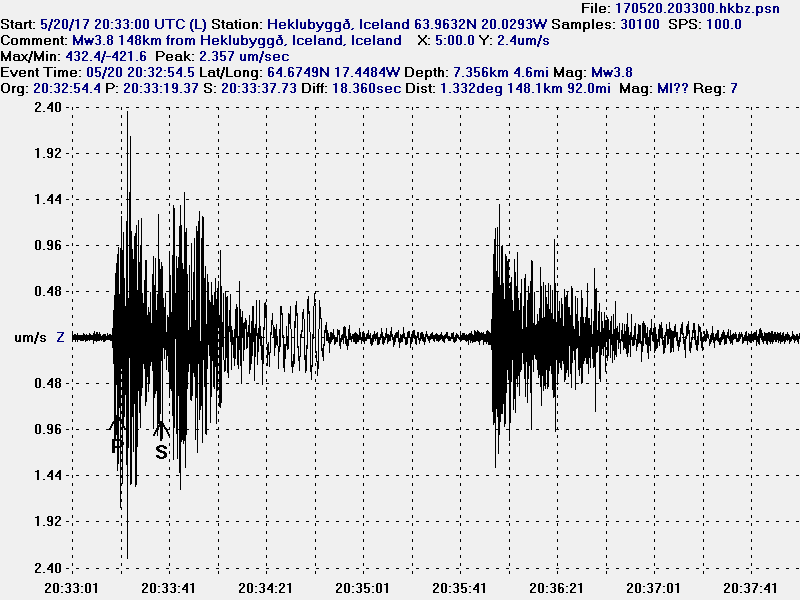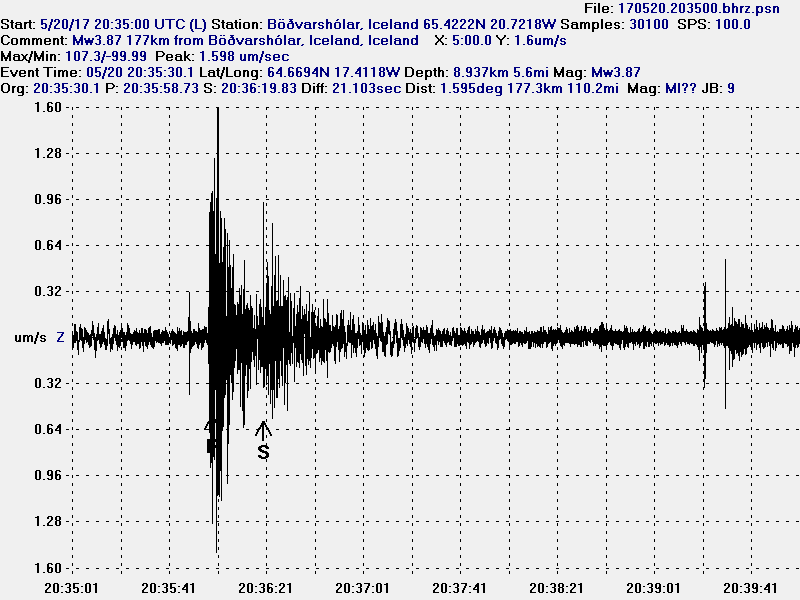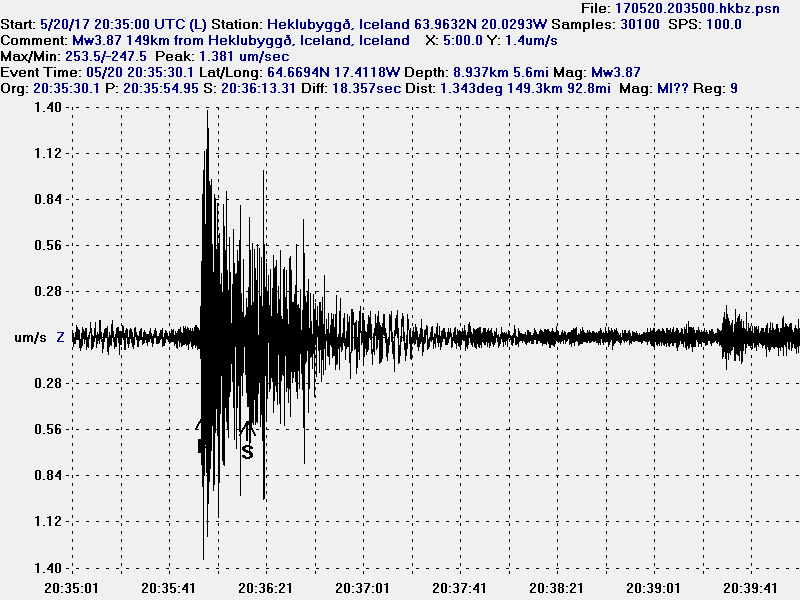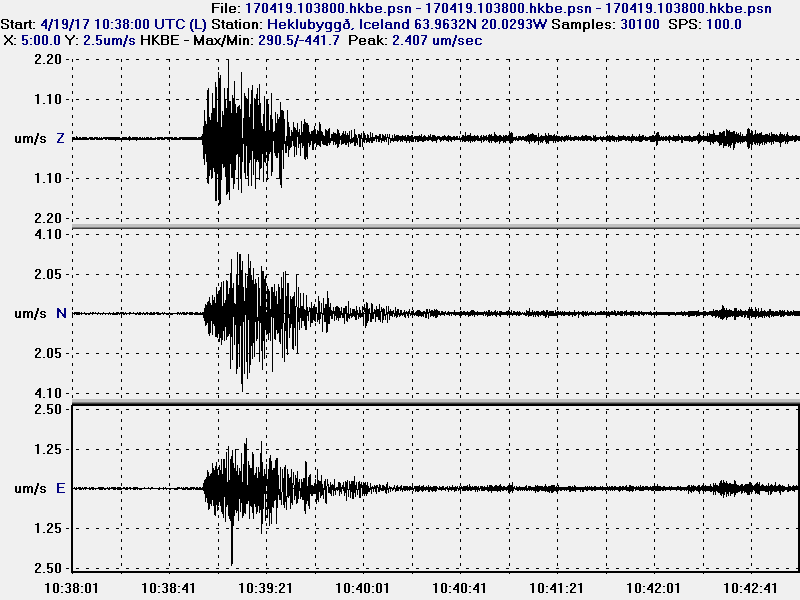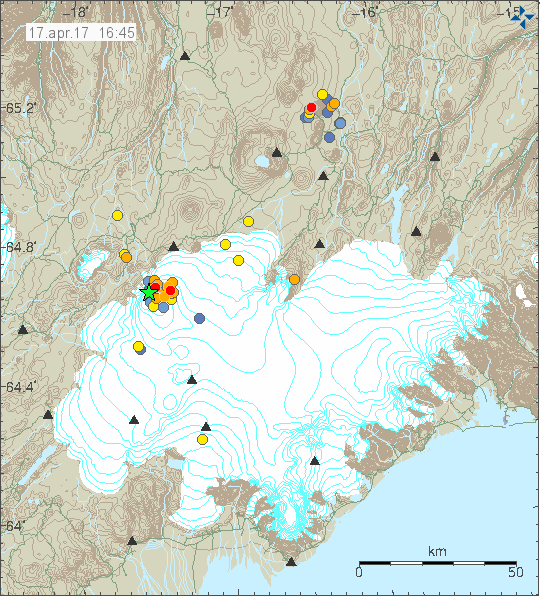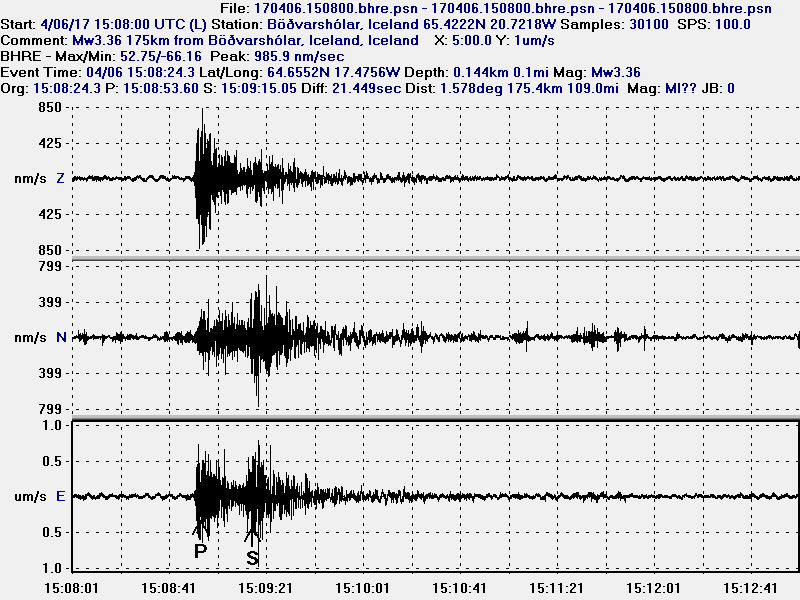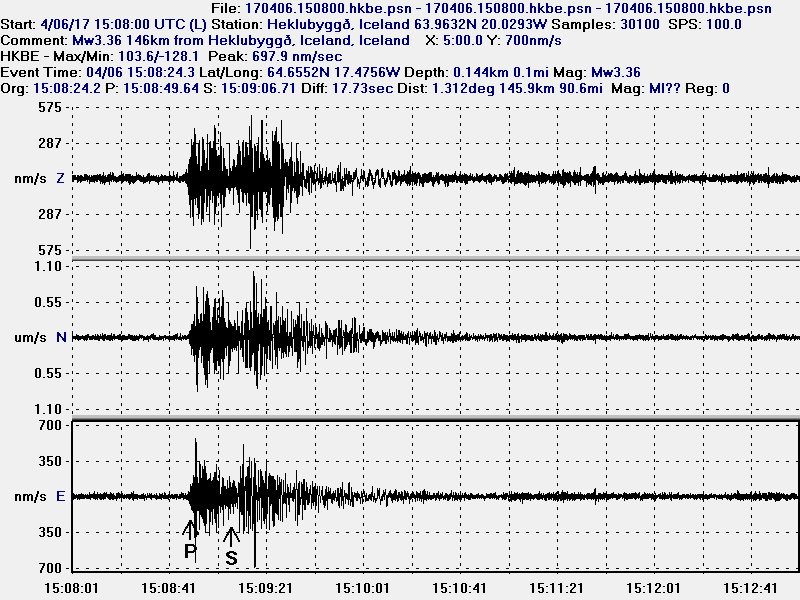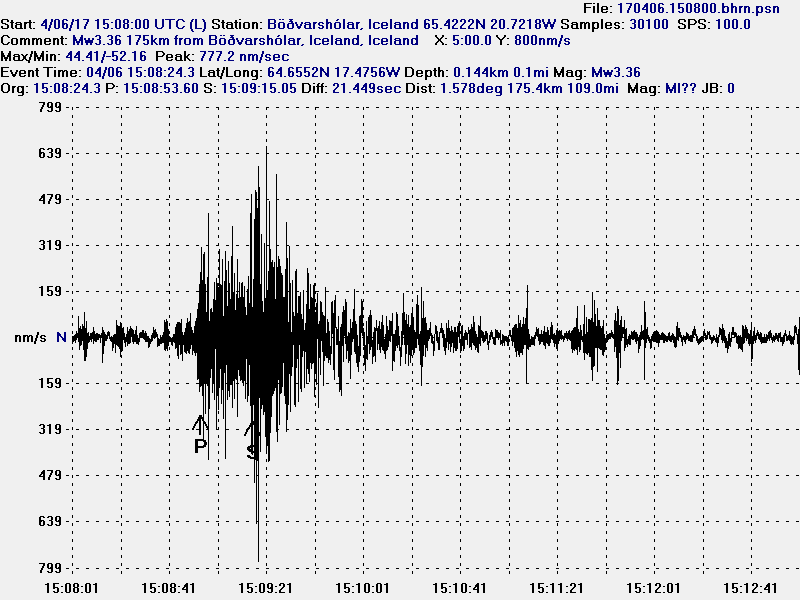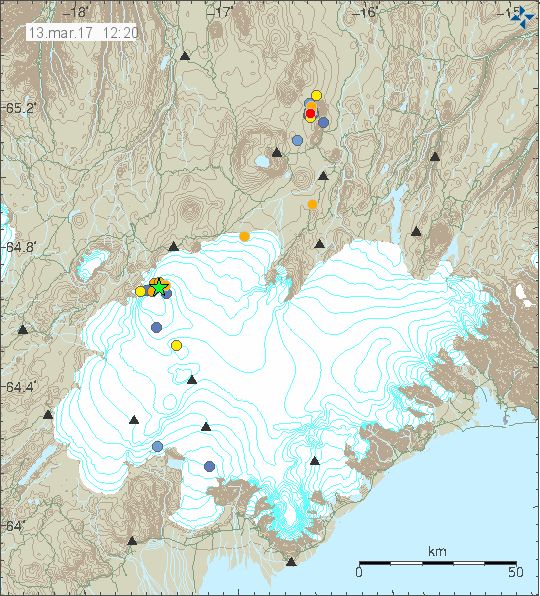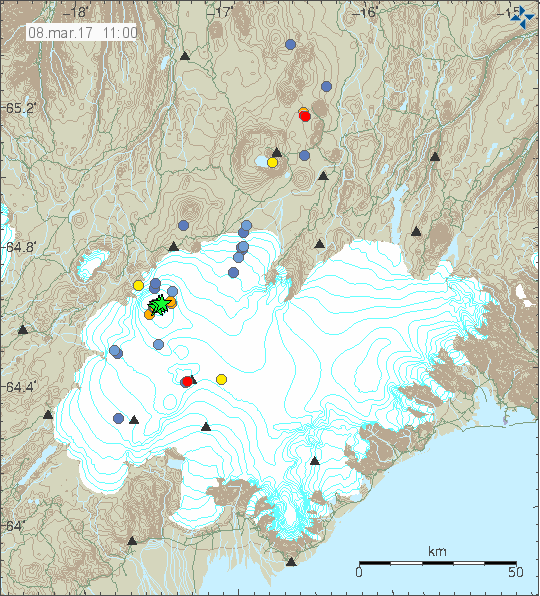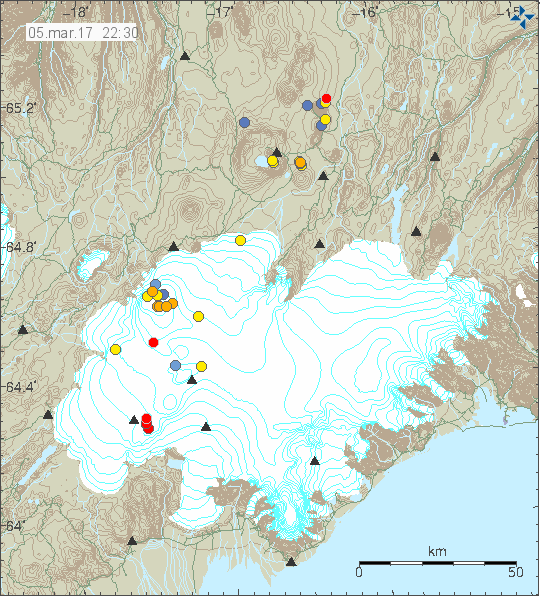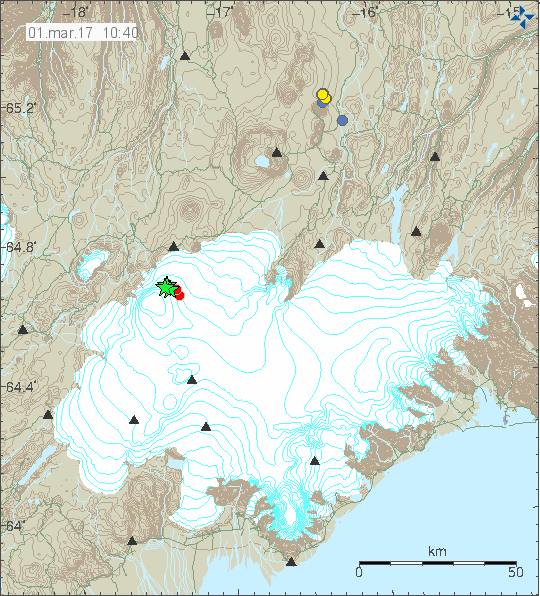Yesterday (24-May-2017) and today (during the night of 25-May-2017) there was an earthquake swarm in Kolbeinsey island. Largest earthquakes had the magnitude of 3,6 (x2) and one magnitude 3,5 earthquake took place. Other earthquakes where smaller in magnitude. No harmonic tremor where detected during this activity, that does not rule out that this activity is due to dyke intrusion taking place in Kolbeinsey island. It just didn’t reach the surface this time. Kolbeinsey island is far away from the SIL network, with the closest station being in Grímsey island (~25 km) with other SIL station at ~60 km distance. If an eruption starts in Kolbeinsey Island, a harmonic tremor signal is going to appear in Grímsey island SIL station.
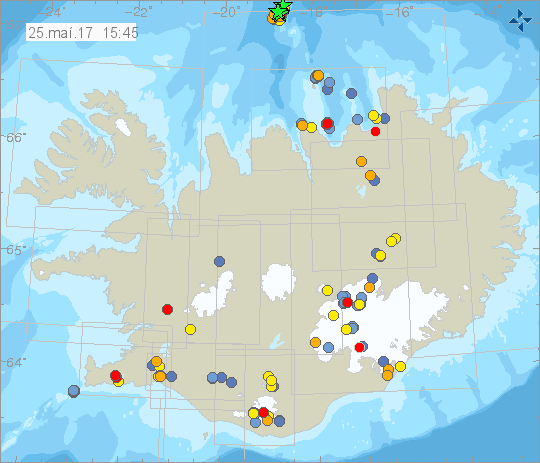
Green star mark the area where the earthquake swarm took place in Kolbeinsey island. Copyright of this image belongs to Icelandic Met Office.
Last eruption in this area took place in the year 1755, but that eruption might not actually have been in Kolbeinsey Island, but in a other unnamed volcano north of it (where is not known). Last confirmed eruption in Kolbeinsey island took place in the year 1372, it was closer to land somewhere north-west of Grímsey island (suggesting that fissure swarm of Kolbeinsey island comes close to Grímsey island).
At the moment the activity has quieted down and no earthquakes are being detected by the SIL network.
Donations
Please remember to support my work with donations. Thanks for the support. 🙂

